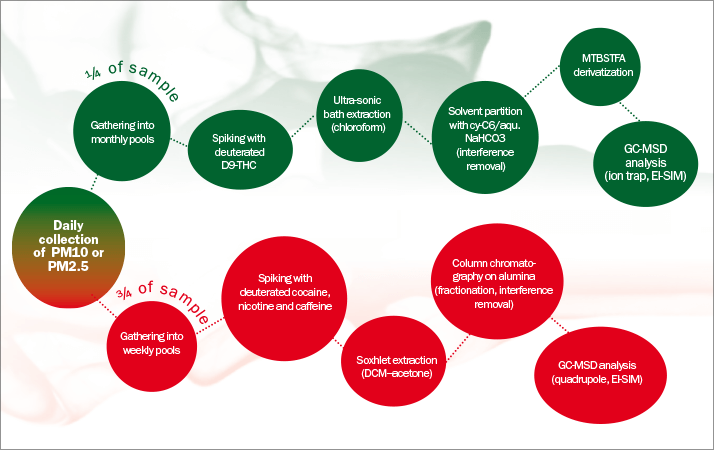
“The first measurement was a pure curiosity. No-one had reported these compounds in the atmosphere previously. Discovering cocaine in the air of Rome led me to investigate other substances in different cities and situations. I thought it might provide information about lifestyle in terms of drug consumption and perhaps identify any health significance.”
“The Italian Department for Anti-Drug Policy support the work. They had interest on two levels: the actual concentration levels of illicit drugs in Italian cities, and whether this information could be used as a quantitative indicator of drug consumption.”
“Common and simple methodologies that could be easily applied by air pollution control authorities everywhere. Cost efficiency, equipment availability and ease of data comparison were at the forefront of my mind. We took measurements for an entire year in Italy’s four largest cities as well as four medium sized cities.”
“We got reproducible results on drug concentrations. But providing conclusive answers to the second aspect is more difficult. The results provide some qualitative indicators about drug consumption in different cities and regions. But the main confounding factor is how environmental conditions, such as climate or reactivity of the atmosphere, and social factors, like population density, modify the results. Normalizing for population density, Florence and Bologna have the highest levels of cannabinoids in the air, which fits well with estimates that these two cities have higher consumption of cannabinoids due to higher student populations…”
“I have taken measurements in Brazil, Chile and Mexico. Cocaine concentrations there are much higher than in Italy.” Angelo Cecinato, Institute of Atmospheric Pollution Research, National Research Council, Italy.
